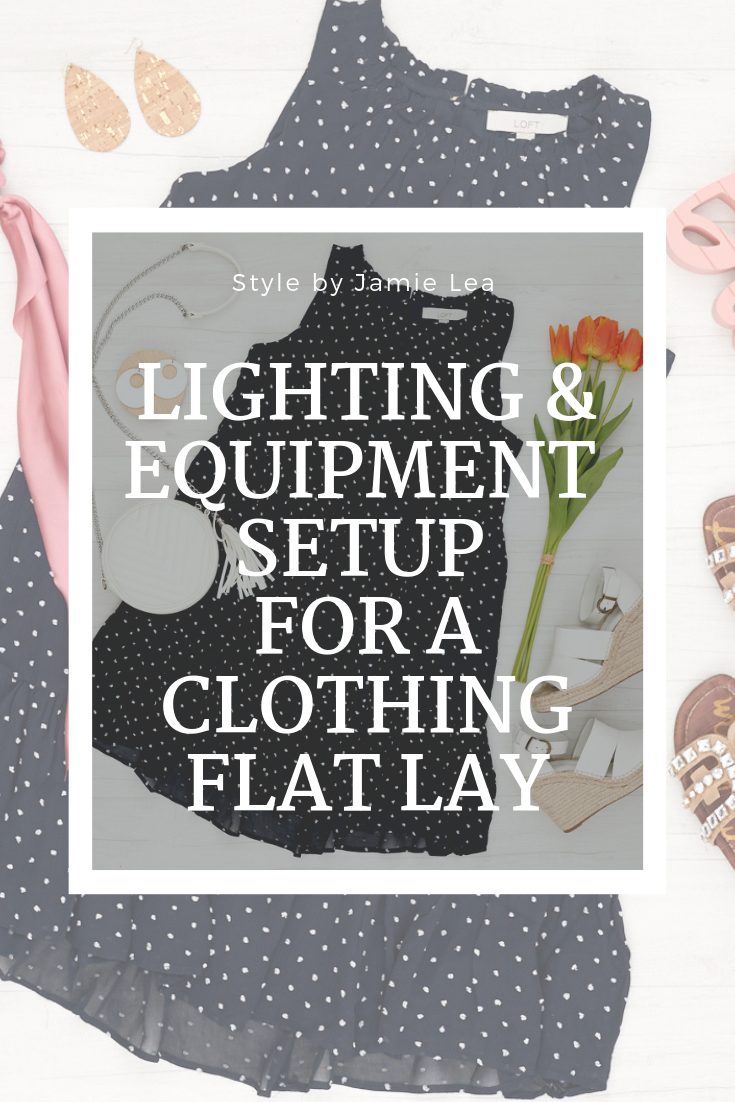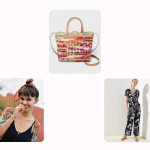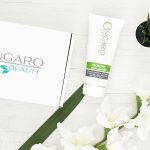 Hey ladies! I hope you read my last post about Tips on How to Master a Clothing Flat Lay! This is a continuation of that and I will be giving you some tips on Lighting and Equipment Setup for a Clothing Flat Lay. This may require you to spend a little bit of money but the results are worth it if you want great quality photos.
Hey ladies! I hope you read my last post about Tips on How to Master a Clothing Flat Lay! This is a continuation of that and I will be giving you some tips on Lighting and Equipment Setup for a Clothing Flat Lay. This may require you to spend a little bit of money but the results are worth it if you want great quality photos.
I have to begin by saying that I have a very professional set up. My husband made me a platform with a stand that holds my camera above and dead center of the platform. I also use speed lights (flash) and a mirrorless camera. It took us about 6 months of practice to really get the lighting perfect and figure out the right equipment to achieve it. Even if you do not have the ability to have this set up, I do think you can still achieve a great flat lay by the advice I will give you.
Equipment:
What you will need for your setup:
- A clean and simple backdrop. Start off with a couple of backdrops as you start and then add more as you get experience.
- A good quality DSLR camera with proper editing software. If you choose to use your phone you can create a decent flat lay; it just might take you a little bit more time. If you figure out your setup on the front end and repeat this each time than you will save yourself lots of time as you go. Remember, it is always more work at the beginning as you are learning.
- A tripod and arm attachment to place the camera over your backdrop. This is probably the most important piece to make your process easier and will keep you “hands free” to move things around without moving the camera.
- Proper lighting. This will be either natural light from windows if that is an option (see last post) or some type of photography lighting. You can use consistent lighting or flash. It is up to you. I think this can only be accomplished if you have a DSLR camera that comes with software or an app for your phone/tablet.
Pick your backdrop:
- Before you pick anything, make sure you know how you want to represent your brand. If you want a cohesive feed than think about how to create flat lays that fit in with your look.
- You don’t have to use just one background. You certainly don’t do this with your live photos so why would you do it with your flat lays. I have multiple backdrops that I choose from. Pro Tip: I would recommend staying away from really busy printed backdrops because they distract from the clothing
- Choose your backdrop materials wisely. They have a ton of options available on Amazon but get creative and come up with some on your own.
- I will make a recommendation for a white backdrop. I have tested a few different kinds and my favorite material for the white is vinyl. It is easy to work with, has lots of structure and can be easily cleaned. You will walk all over these backdrops when arranging your clothing and white shows everything!
Tripod and arm attachment:
Consider HOW you are going to take your flat lay photos and WHAT you need to accomplish them. When choosing your additional equipment just remember a flat lay is just that; a photo of objects flat on a surface shot from directly above the items. There are a couple ways to get this type of photo.
- The most popular way to take a flat lay photo is to stand on a stool or chair above the items. In my opinion this is very dangerous and I do not recommend it! I never did this because there are much better solutions.
- Use a tripod with an extender arm attachment. This is how I stared and used for a while. The legs of the tripod prevent the camera from getting dead center but it is still achievable. If you do not have a DSLR camera and use your phone you can buy an attachment to put you cell phone on it.
- Make use of whatever equipment will allow you to be hands free when taking the photo. So definitely consider something to hold the phone or camera you are using.
Camera:
You really have two choices; a phone camera or a professional camera.
- The phone camera seems to be the popular and most affordable choice. This is also the option that will take the most work. First of all, you don’t have as good of access to the screen when taking the picture so it’s a big guessing game as to how it will turn out. Second, it will not pick up as much detail as a professional camera.
- A DSLR or similar professional camera is the way to go. You will be able to get better detailed pictures and have more control over lighting options and camera settings. This also is an option if you want professional looking images that stand out from the rest. I know this is a pretty expensive option but you really will get what you pay for.
- You will have more consistency if you use the same camera for all your photos; live versions and flat lays.
- Try to find a tablet or laptop that will be able to connect to the camera. This will help you see what is going to be photographed without having to get to the camera on the tripod. I think this is only available for a DSLR camera through software for the camera or an app for you phone/tablet.
Lighting:
- The most popular way to get light is through natural sunlight. If you do live in a great sunny area and have a good spot in your house that has great lighting from a window than by all means take advantage of it! You will still need to invest in something that will reflect light from the opposite side of the window to minimize your shadows. You can use a reflector or try a solid white board.
- If you are using a DSLR camera I recommend that you get good lighting from either using flashes or special camera lighting. It will need to light the area evenly in order to minimize shadows. You are also in control of your lighting source and don’t have to depend on a sunny day. Especially if you live in an area that seeing the sun is rare. Memphis can be like that sometimes.
- Constant lighting is a great option for either a phone camera or a professional camera. Make sure you do your research and get the proper fixtures and bulbs for what you are trying to achieve.
- The color of your photos will be determined by how good your lighting is and the settings on your camera. Try to white balance the photos the best you can to get the true color of the garments. There are many ways to accomplish this, so I recommend researching this online a little bit and figuring out what works best for you. If you use filters or presets for your photos then this is probably a muke point.
I know this is not super detailed but it will at least get you thinking and knowing what you need to do. I can’t give away all my secrets that I worked very hard to figure out, right!? 
Thanks so much for reading and leave me any questions or comments below!




2 Comments
No wonder you have always had such amazing flat lays!! This is such a great blog post Jamie!!!
Thank you so much Kelli!